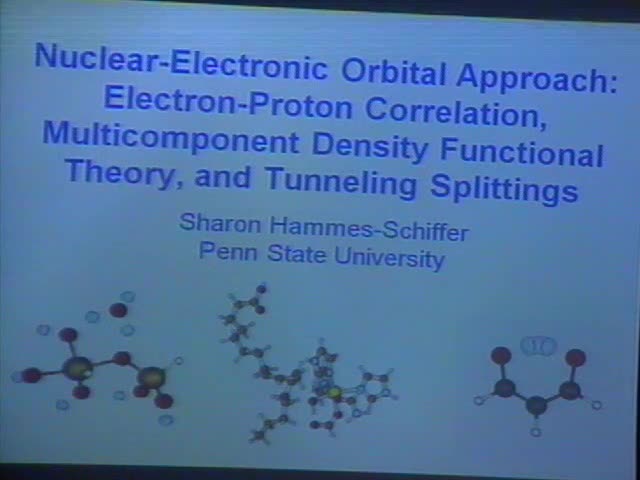Nuclear-electronic orbital approach: Electron-proton correlation, multicomponent density functional theory, and tunneling splittings
Presenter
January 14, 2009
Keywords:
- Electron optics
MSC:
- 78A15
Abstract
Recent advances in the development of the nuclear-electronic orbital (NEO) approach will be presented. In the NEO approach, selected nuclei are treated quantum mechanically on the same level as the electrons with molecular orbital techniques. For hydrogen transfer and hydrogen bonding systems, typically the hydrogen nuclei and all electrons are treated quantum mechanically. Electron-proton dynamical correlation is highly significant because of the attractive electrostatic interaction between the electron and the proton. An explicitly correlated Hartree-Fock scheme has been formulated to include explicit electron-proton correlation directly into the nuclear-electronic orbital self-consistent-field framework with Gaussian-type geminal functions. A multicomponent density functional theory has also been formulated, and electron-proton functionals have been developed based on the explicitly correlated electron-proton pair density. Initial applications illustrate that these new methods provide accurate nuclear densities, thereby enabling calculations of a wide range of molecular properties. Recently the NEO method has been combined with vibronic coupling theory to calculate hydrogen tunneling splittings in polyatomic molecules. In this NEO-vibronic coupling approach, the transferring proton and all electrons are treated quantum mechanically at the NEO level, and the other nuclei are treated quantum mechanically using vibronic coupling theory. This approach is computationally practical and efficient for relatively large molecules. The calculated tunneling splitting for malonaldehyde is in excellent agreement with the experimental value. Furthermore, this approach enables the identification of the dominant modes coupled to the transferring hydrogen motion and provides insight into their roles in the hydrogen tunneling process.
